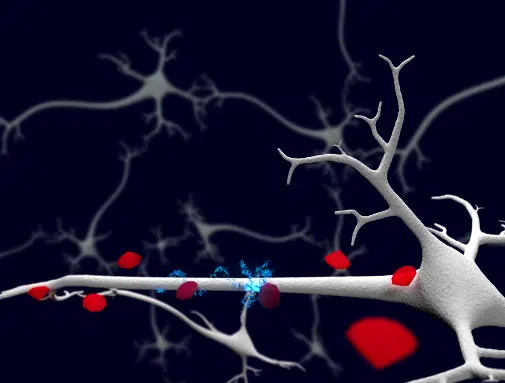Marco Capelli – RMIT University
Scientists still don’t fully understand how the brain works, and that means they don’t fully understand why it sometimes doesn’t work. A new technique uses tiny diamonds to shed light on the communication between neurons in the brain.
Neurodegenerative diseases like Alzheimer’s and Parkinson’s are related to a loss in connections and reduced communications between neurons. Investigating the network of neurons is an important step to better understand the development of those diseases.
Marco Capelli of RMIT and his colleagues have found a way to use diamonds to study these connections.
The diamonds have two important characteristics, Marco says.
“First, they are extremely small. With a size hundred times smaller than the diameter of a human hair, they can get close to or even inside single neurons to precisely study each connection.
“Second, they emit light. They glow like small torches that can be seen using available fluorescence microscopes.”
The glow dims when the neurons start to communicate with one another, and returns to full brightness when the communication is over.
So far, Marco and his team have observed the change in emitted light from the diamonds.
“Next we are pushing toward a faster time interval between single communications and a precise measure of their strength,” he says.
Image: Schematic representation of the nanodiamonds changing the intensity of emitted light (red glow) when a neuron signal travel along the cell.





 Fresh Science is on hold for 2022. We will be back in 2023.
Fresh Science is on hold for 2022. We will be back in 2023.